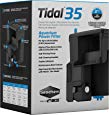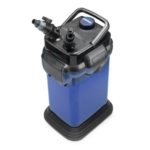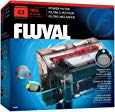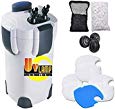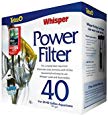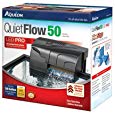Top 3 Fish Tank Filters
Best Aquarium Filters of 2020
- Best Overall Aquarium Filter: Seachem Tidal Power Aquarium Filter
- Best Large Tank (100+ Gallon) Aquarium Filter: Fluval FX6 Canister Filter
- Most Versatile Aquarium Filter: AquaClear Power Filter
- Best Bargain Aquarium Filter: Tetra Whisper Filter
- Most Efficient Aquarium Filter: Sun Sun 303B Filter
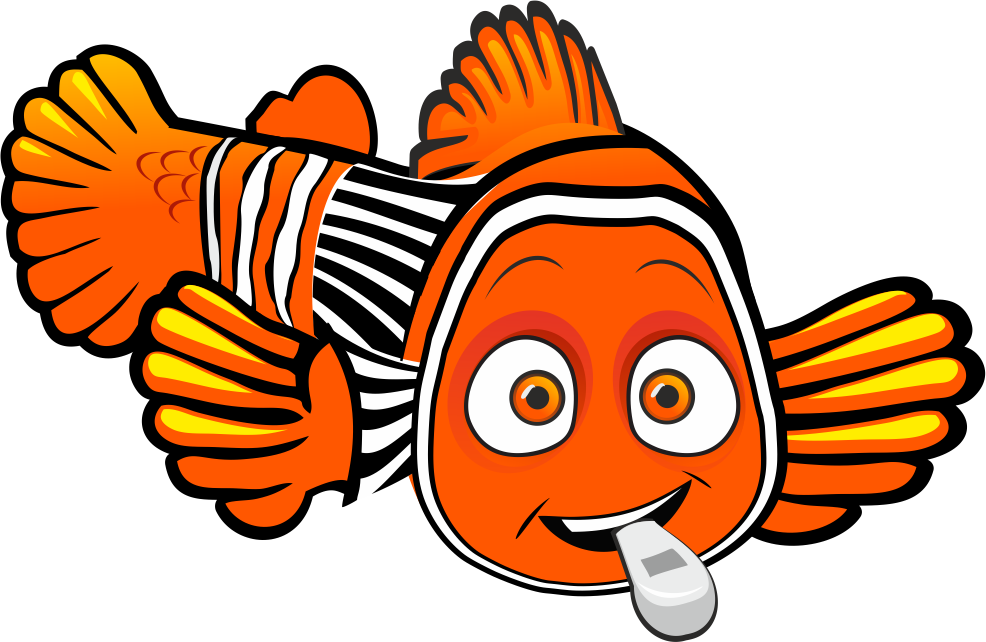
Why do I need a filter for my fish tank?
While there are a few fish that may be able to survive in an aquarium with out a filter, that is the exception to the rule. A well sustained aquarium will almost always have a filter, which helps keep the water in your fish tank clean. There are a few ways your filter can keep your aquarium clean, one of which is by producing “surface agitation” which will keep oxygen flowing throughout your fish tank. Another way a filter sustains your aquarium sustained is by removing toxins and debris (aka fish poop). The filter’s primary function is to give your fish a cleaner environment in which to flourish and live happy lives.
Factors To Consider
- Price Range
- Size of Fish Tank
- Type of Water
- Number of Fish
- Species in Tank
- Look and Feel of your set up
- Your Experience Level
- Required or Needed Attachments and Modifications
All of the above factors will influence with filter or filters you pick for your aquarium(s). The first item you need to determine is your overall budget. This will be the first factor that will narrow your options, and we recommend being honest with yourself from the beginning on what you can afford. The next decision you’ll need to make is what size fish tank this filter is for. Depending on the capacity of the tank, your options for filters will again become smaller. Budget and Size of Fish Tank are the two most important factors to consider because you must choose a filter that will work for your budget and will work for your fish tank. Another binary factor that will influence your decision is the type of water you will have in your aquarium – salt or fresh – as some filters may only be right for one water type. Most filters will work with both types of water, but you should make sure before buying. Lastly, you should consider what type of species and how many of those species you plan to have in your tank. This will influence the power of filter you need, as well as the type of filter you need. Some filters can harm fish in certain circumstances, so you want to make sure your filter will complement your fish!
Types of Filters
- Hang On Back
- Canister
- Sump
- Sponge
- Under Gravel
The are a variety of filters, but the two most common are the “Hang on Back” and the “Canister” filters. The Hang on Back, or HOB, is a filter that quite literally hangs on the back of your fish tank. The Canister filter is a filter that uses hoses to pump water from your aquarium, to the filter for cleaning, and then back into your aquarium. You’ll need some space under or around your fish tank to store the canister filter, and you’ll need some space around the tank for the HOB filter.
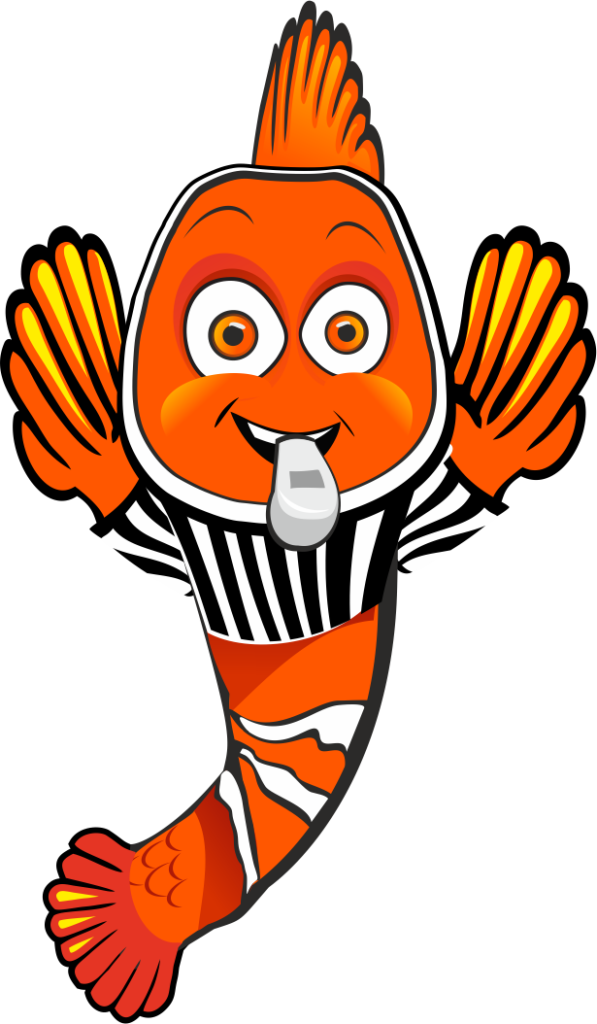
Ohfishal’s Top 10 Aquarium Filters
Frequently Asked Questions about Aquarium Filters
Simple answer, you’re fish need to breathe to live and they need clean, oxygenated water to do that. Without a filter, this process is much more difficult, not impossible, but difficult. Without a filter, you have to remove the fish to clean the tank, switch out all the water, and then acclimate your fish back to the tank. With a filter, you keep your water healthy without having to disturb your aquarium’s species.
Simple answer, in most cases no. Most filters will work for both types of water, but Saltwater aquariums definitely take more filtration. You may need to utilize different types of filter media in a Saltwater tank, but the base filter should be able to work for both. That said, make sure you research before you buy that your filter of choice will be compatible with your water type.
Unfortunately, there is not a clear cut answer to this question. How often you need to change your fish tank’s filter will depend on the type of filter and filter media that you use in your tank. Most filters will need to be changed either monthly or every other month.
Filters can definitely take getting used to and some adaptations. There are different types of filter media, different flow capacities, different adaptations you can make to your filter – all of which you just get more familiar with practice. Your local aquarium store can be a helpful resource as you learn, but like anything, you’re going to learn best by doing. Our “Ohfishal” recommendation for beginners – don’t overthink it! Pick a filter, give it a shot, and know you’re going to make some mistakes. The key is that you learn from those mistakes and gain valuable experience in your fish keeping journey!

